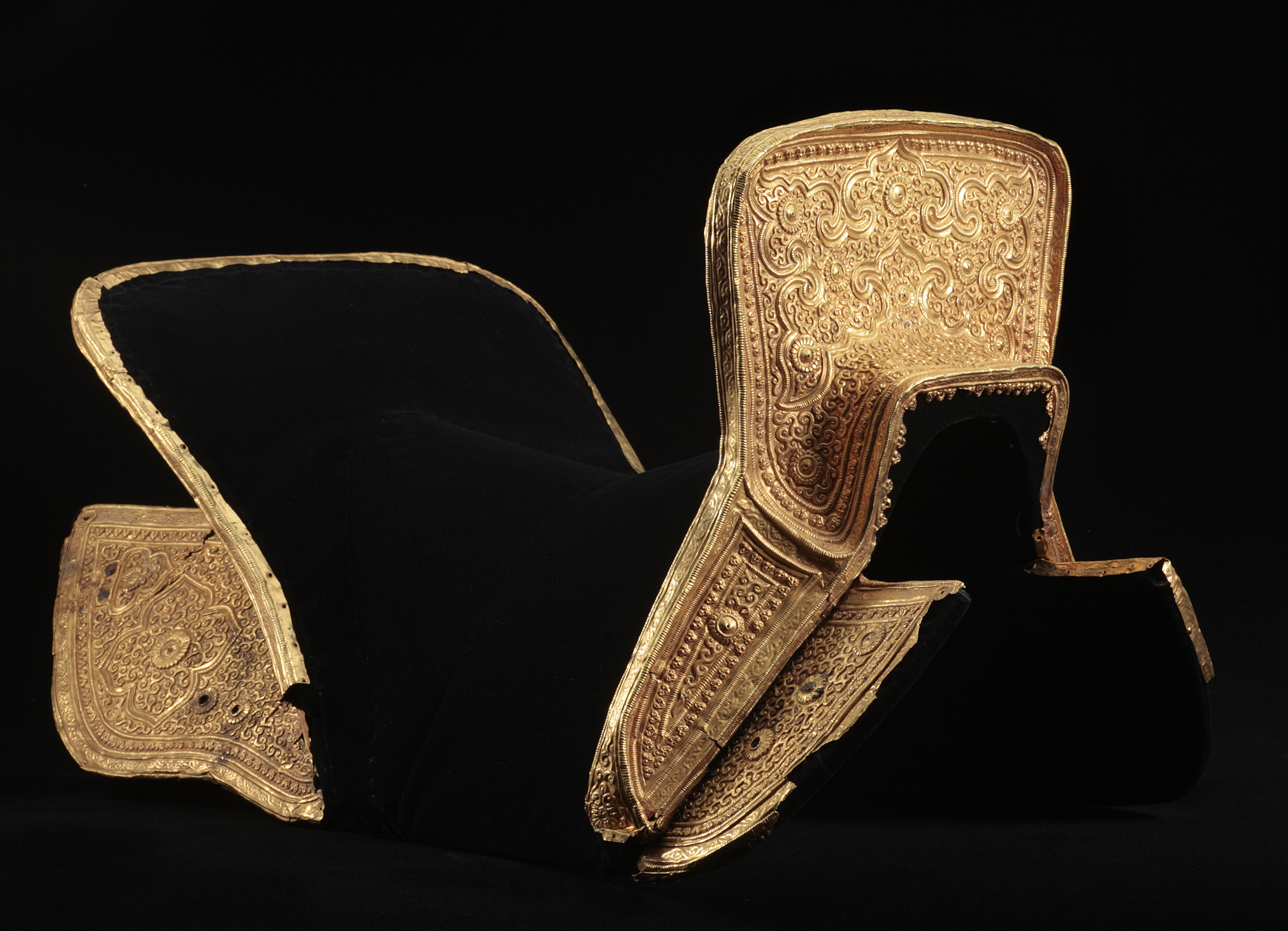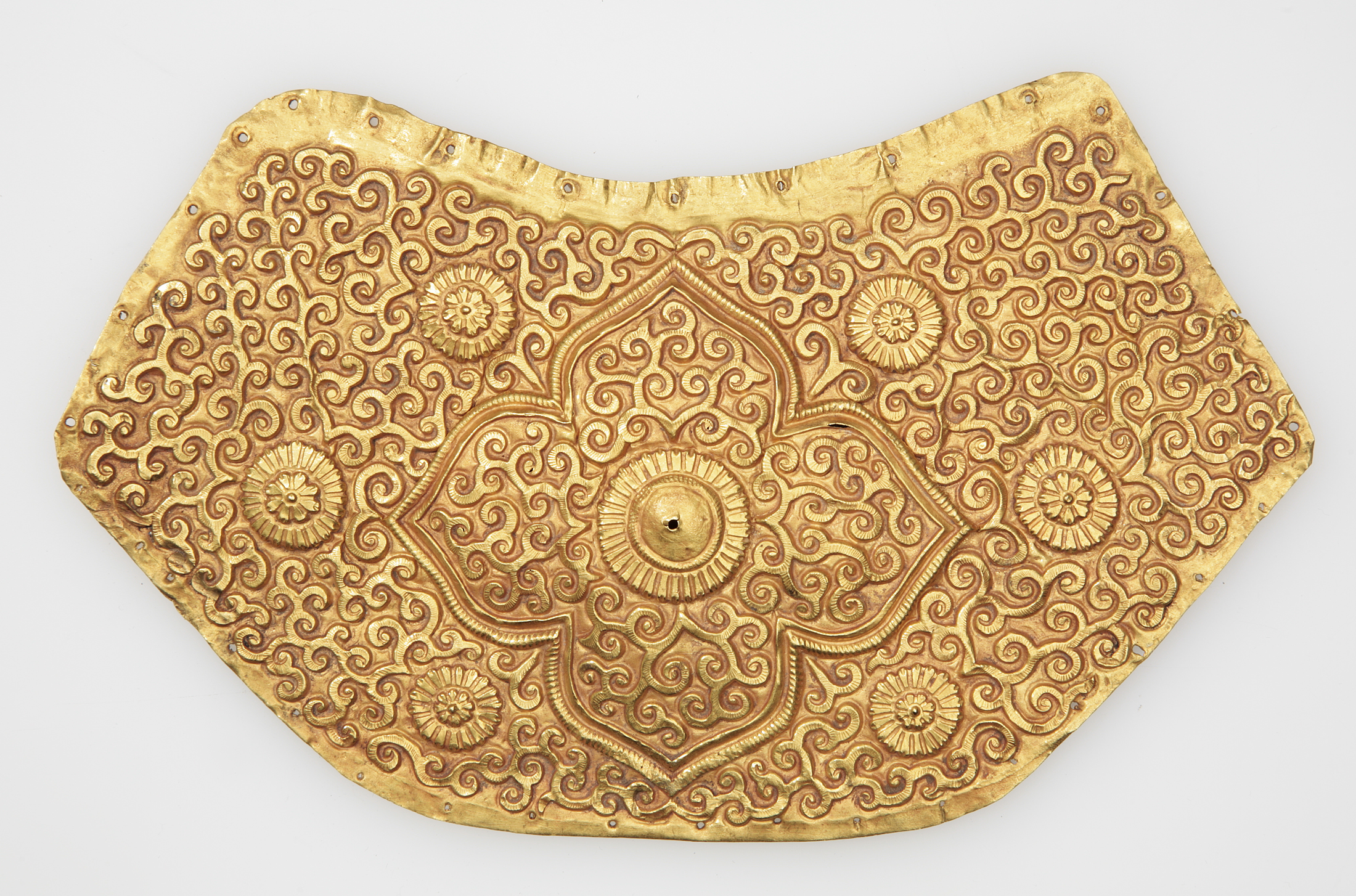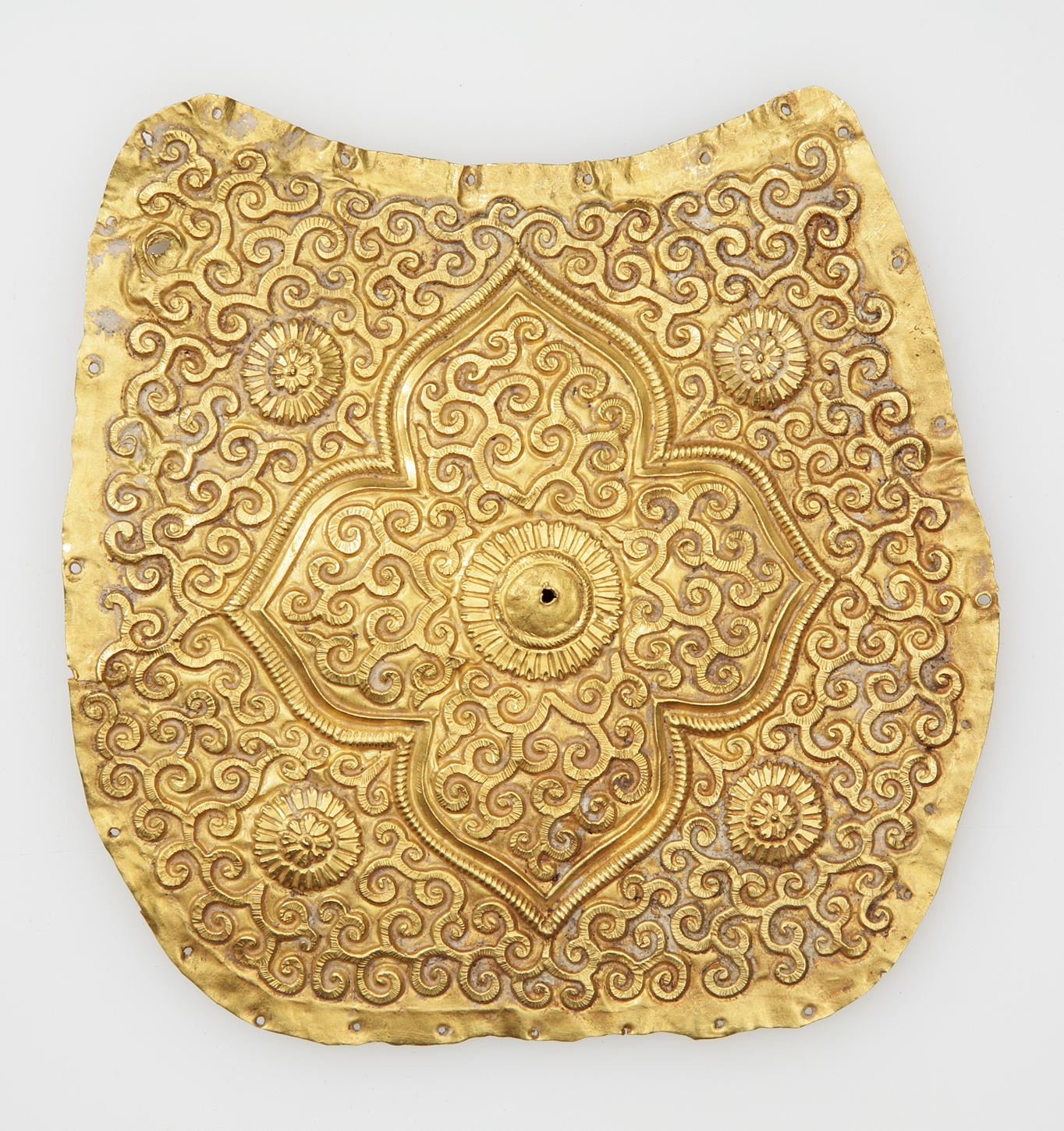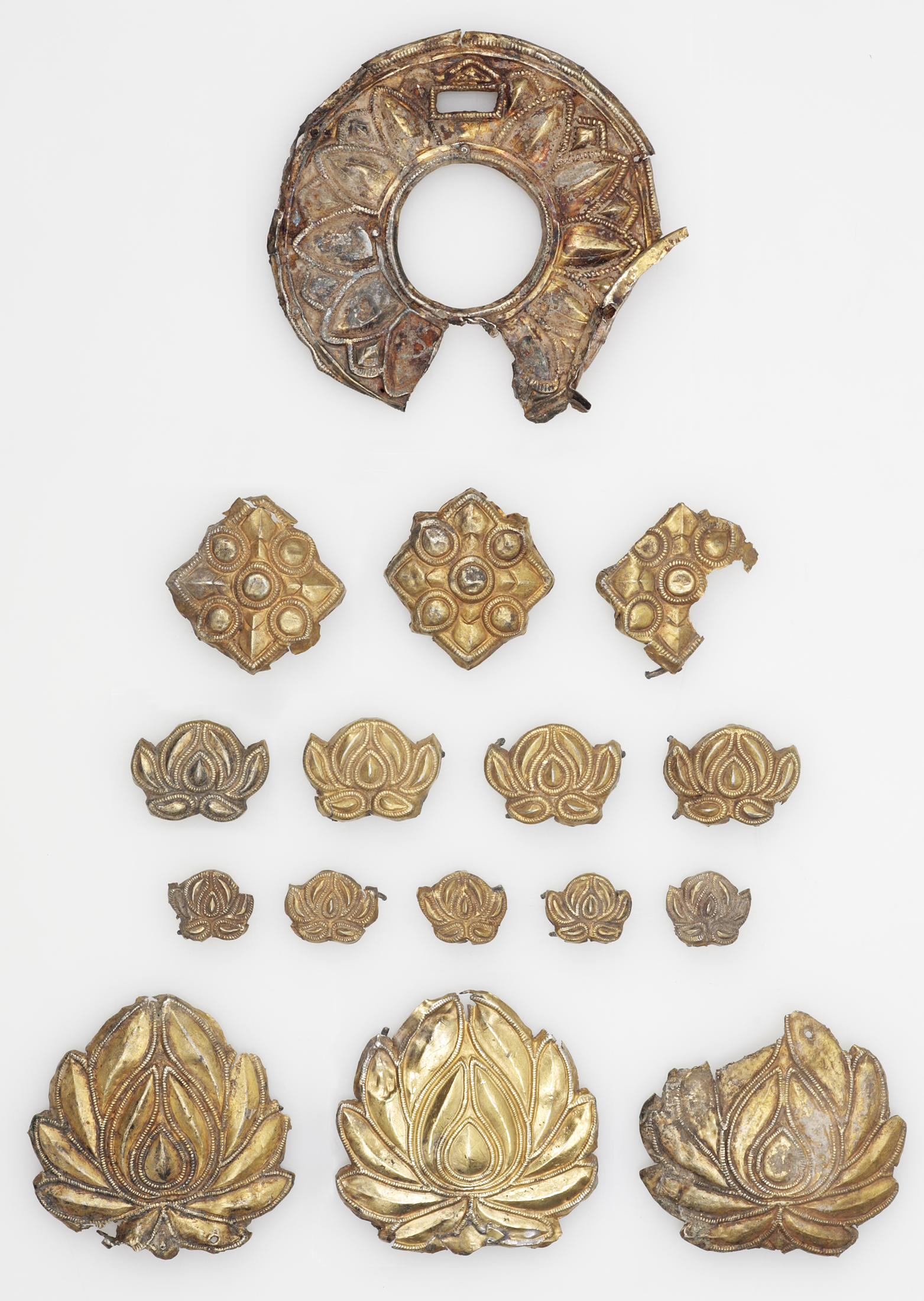 Print Page
Print Page
 Print Page
Print Page
Location: Central Asia or western frontiers of China
Materials: gold sheet, worked in repoussé, with chasing and engraved details (saddle plaques);
silver sheet, worked in repoussé and gilt (trappings)
Dimensions: 29.7cm (max height, as reconstructed)
Accession Number: MTW 795
Other Notes:
Despite their decoration in Chinese style, the saddle and horse trappings were reportedly discovered in Iran or Central Asia and were attributed to the period following the break-up of the Liao dynasty in northern China (circa 1116–23) when some of the survivors, known as the Qara-Khitay, moved into eastern Central Asia, Transoxania and Transcaspia and governed these areas as overlords until the Mongol invasion of 1220–21. More recently they have been attributed to the Mongol empire under Genghiz Khan, on the basis of parallels with a woman’s saddle excavated from a burial at Baodegu-Wusumu Hashatugacha (now in the Inner Mongolian Museum at Huhehaote).
In addition, there are over 70 silver-gilt attachments of various shapes and sizes (see selection below), most probably from a harness and made at a slightly later date.
Bibliography:
D. Alexander, The Arts of War. Arms and Armour of the 7th to 19th Centuries, The Nasser D. Khalili Collection of Islamic Art, volume XXI, London 1992, cat.14, 15, pp.42–51.
J.M. Rogers, The Arts of Islam. Masterpieces from the Khalili Collection, London 2010, cat.211, pp.180–81.



